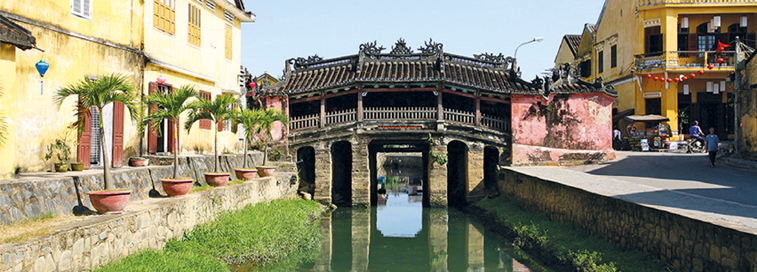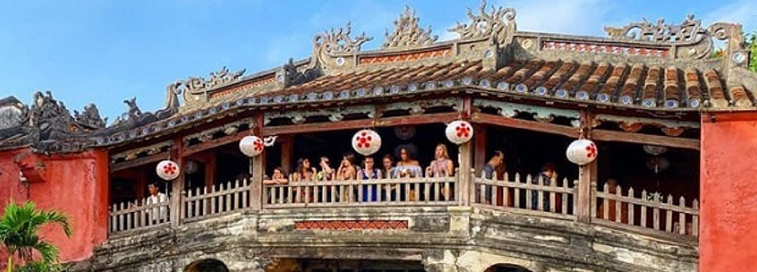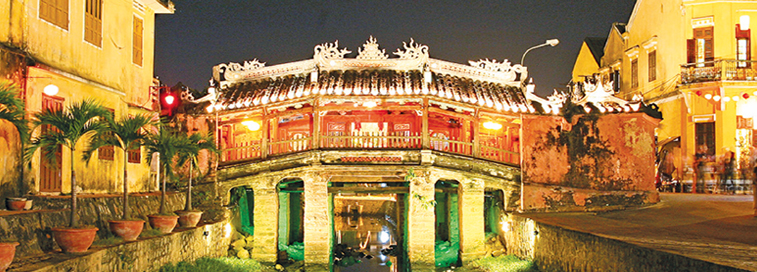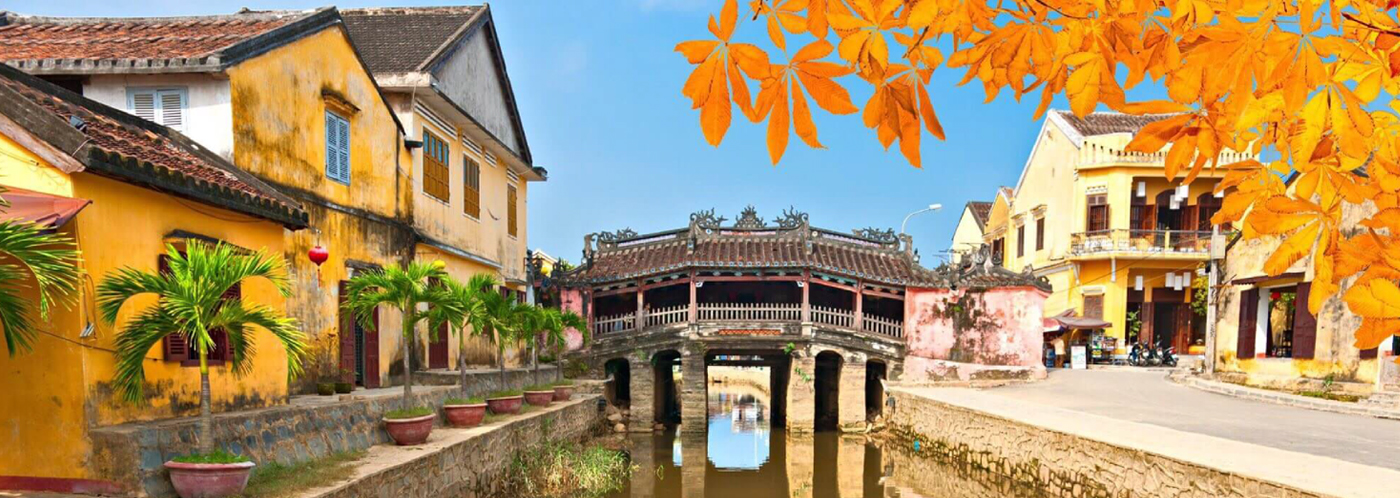Temple Bridge



Nestled in the heart of Hoi An's Ancient Town, the Japanese Covered Bridge, or Chùa Cầu (Pagoda Bridge) in Vietnamese, is a captivating landmark symbolizing the town's rich cultural tapestry. Built in the late 16th century by Japanese merchants, the bridge seamlessly blends Japanese aesthetics with Vietnamese and Chinese influences.
Walking across the Thu Bon River, pedestrians traverse a vibrantly coloured wooden structure adorned with intricate carvings and a captivating roof layered with Japanese tiles. Weather-beaten statues of monkeys and dogs stand guard at the bridge's entrances, each with their own intriguing legends. Some say they represent the years of construction, while others believe they hold a deeper meaning related to Japanese imperial births.
The bridge's true charm lies in its unique dual nature. Attached to the northern side is a temple dedicated to Tran Vu, the god of weather. This fascinating combination is the reason for the bridge's alternative name, Pagoda Bridge. Over the centuries, the bridge has undergone several renovations, incorporating elements of Vietnamese and Chinese architecture alongside its original Japanese design. This beautiful fusion reflects the historical exchange between these cultures and Hoi An's role as a bustling trading port.
Today, the Japanese Covered Bridge remains an iconic landmark, a testament to Hoi An's multicultural heritage. Visitors are drawn to its picturesque beauty, fascinating history, and the tranquil atmosphere it creates within the heart of the ancient town.

